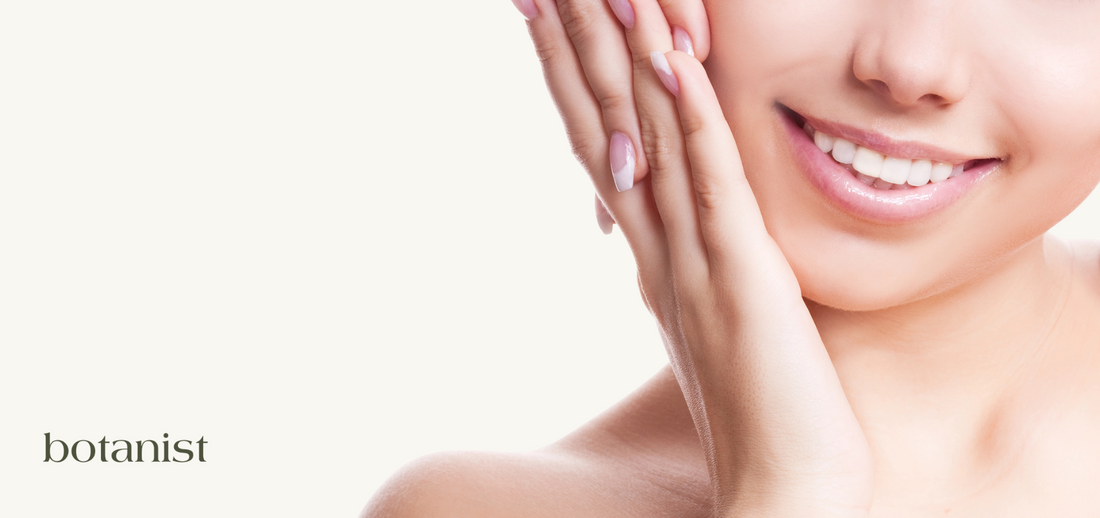5 Signs of Vitamin Deficiency in Nails
Tess Miller
Summary
- Nail changes like ridges, brittleness, or discoloration can signal vitamin and mineral deficiencies.
- Common culprits include low levels of biotin, iron, zinc, and B12 often linked to poor nutrition.
- A balanced diet and targeted supplements, like Botanist’s nail serum, can support healthy nail growth.
Have you ever examined your fingernails and noticed unusual ridges, discoloration, or changes in texture? While many of us think of nails as just a cosmetic feature, they can actually provide important clues about our overall health especially when it comes to vitamin and nutrient deficiencies. Issues like brittleness, spoon-shaped nails, or white spots often signal imbalances in the body long before other symptoms appear.
In this article, we’ll explore the most common nail changes linked to vitamin deficiencies, which nutrients you might be lacking, and how to restore healthy nail growth.
The nail rescue kit by botanist combined with good nutritional habits can support your nail recovery
Why Nails Reflect Your Nutritional Health
Nails grow from the matrix, the tissue beneath your cuticle and their condition is directly influenced by your diet and blood circulation. When your body lacks essential vitamins and minerals, non-vital functions like nail growth are often the first to suffer. This is your body’s way of prioritizing critical organs over less urgent needs.
Research shows that many nail abnormalities are tied to micronutrient deficiencies. For example, according to clinical studies, brittle nails and vertical ridges have been linked to low levels of biotin, iron, and other key nutrients. Recognizing these signs early can help you address deficiencies before they lead to bigger health issues.
The botanist nail growth serum enhances nail and cuticle health

Common Nail Signs That Point to Vitamin Deficiencies
Here are some of the most frequent nail changes and the deficiencies they may indicate:
- Brittle Nails – If your nails crack or split easily, you may need more biotin (Vitamin B7), which is crucial for keratin production.
- Vertical Ridges – While these can be a normal part of aging, they may also suggest magnesium or iron deficiency.
- White Spots – Often caused by zinc deficiency, though minor trauma can also lead to these spots.
- Spoon-Shaped Nails (Koilonychia) – When nails thin and curve inward, it’s commonly due to iron deficiency anemia and may require medical attention.
- Yellow Nails – Typically linked to fungal infections, but can also indicate Vitamin E deficiency.
- Clubbing – Nails that curve around fingertips may signal low oxygen levels, often tied to iron or B12 deficiency.
- Beau’s Lines – Deep horizontal grooves can appear after severe illness or zinc deficiency.

Nutrients Most Commonly Linked to Nail Changes
Let’s break down the vitamins and minerals most essential for strong, healthy nails:
Biotin (Vitamin B7)
Known for supporting hair, skin, and nails, biotin deficiency can lead to brittleness and slow growth. Studies show that biotin supplementation can improve nail thickness by up to 25%.
Iron
Low iron levels reduce oxygen flow, leading to weak, ridged, or spoon-shaped nails. This is especially common in women with heavy menstrual cycles.
Zinc
Critical for tissue repair, zinc deficiency can cause white spots, Beau’s lines, and even nail loss in extreme cases.
Vitamin B12 & Folate
These B vitamins are vital for red blood cell production. Deficiencies may result in darkened nails, pigmentation changes, or even nail detachment. A study on nutritional deficiencies showed clear correlations between low levels of B12 and notable nail abnormalities.

Foods That Support Healthy Nails
The best way to combat deficiencies? Nutrient-rich foods.
Try incorporating:
-
Eggs (biotin, protein)
-
Leafy greens (iron, folate, magnesium)
-
Legumes (zinc, iron, B vitamins)
-
Fatty fish (Vitamin D, B12, protein)
-
Nuts & seeds (Vitamin E, zinc, magnesium)
- Dairy (calcium, biotin, Vitamin D)
When to See a Doctor
If nail changes persist or come with fatigue, dizziness, or other symptoms, consult a healthcare provider. Some abnormalities may indicate thyroid disorders, autoimmune conditions, or chronic deficiencies needing medical treatment.
A review of nail changes in systemic disease highlights that clinicians frequently miss these signs as early indicators. Pay attention, your nails may be signaling underlying health issues.
FAQ
1. Can vitamin deficiencies really be diagnosed by looking at your nails?
Not definitively, but nails can provide important hints. Blood tests are needed for confirmation.
2. How long does it take to see improvement in nails after correcting a deficiency?
Since nails grow slowly, changes may take 3–6 months to show. Consistency is key.
3. Are over-the-counter biotin supplements safe?
Generally yes, but high doses can interfere with lab tests. Check with a doctor first.
4. Can stress affect my nails too?
Yes! Severe stress can deplete nutrients and even cause temporary ridges (Beau’s lines).
5. What’s the difference between nail fungus and a vitamin deficiency?
Fungal infections usually cause thick, discolored nails with a foul smell, while deficiency-related changes are more subtle.
Your nails are more than just a beauty concern, they’re a mirror of your internal health. If you notice persistent changes, it might be time to reevaluate your diet and consider whether you’re getting the right nutrients. Small adjustments today can lead to stronger, healthier nails tomorrow.
